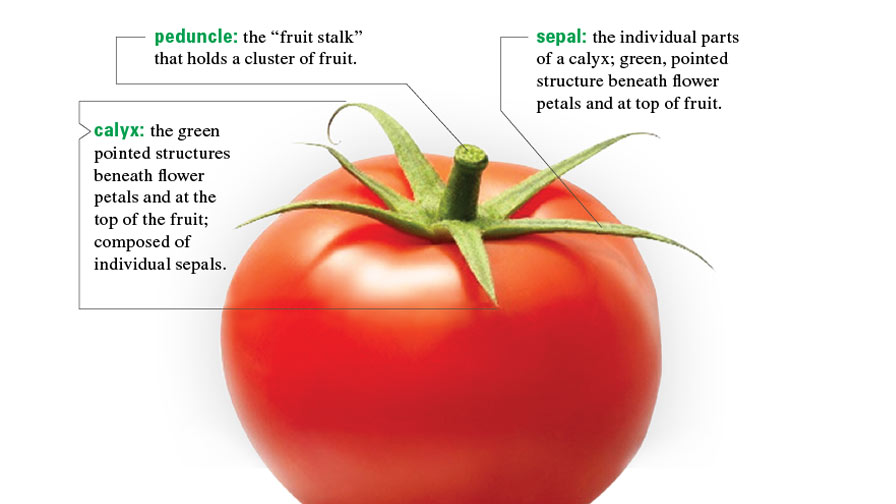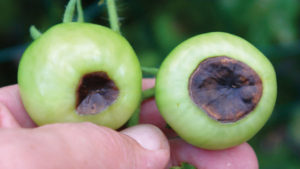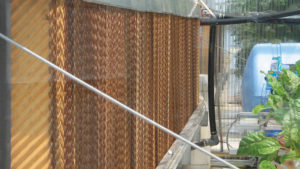Speak Your Greenhouse Plants’ Language


HAVE YOU NOTICED when you visit with your tax professional that any conversation quickly plunges into terms and phrases that only he or she really understands? It’s like there’s a secret language people in the tax field use so they can talk freely among themselves without the general public totally knowing what they are discussing.
This also happens in the legal field. Whether you are buying a house or doing financial planning, dealing with a lawyer and his or her unique language of little known terms is mind boggling. What the heck are they talking about?
The more you think about this, I’m sure the more fields you’ll come up with that have their own terms to describe their field of work. For some, that’s auto mechanics. Remember the flux capacitor reference in the movie “Back To The Future”? Although that’s a made-up term, it is just as foreign to many people as the real-life list of parts that are needed to make your car or truck function properly.
Hydroponic tomatoes are another such field I’m afraid to tell you.
First of all, I can’t even tell you how many phone calls I’ve had for information on hydro-PHON-ic tomatoes. Breaking down that word in my mind while listening to the caller, pictures of stereo speakers blasting music under water come to mind, since the word stereophonic (aka, stereo) is the first thing I think of. It’s hydro-PON-ics, meaning cultivation of plants using liquid solutions rather than soil that people are really interested in.
Now that we got that out of the way, let’s go over some the necessary terms you need to understand so you can talk about your plants, whether they are in greenhouse, tunnels, or field-grown.
My Glossary of Terms

Blossom-end rot
blossom-end rot: a sunken, leathery brown or black spot on the bottom or near the bottom of a tomato fruit; not from a disease; usually from lack of water or not enough calcium in the fruit; on rare occasions it can occur on the side of a fruit or even just on the inside.
bullish: a plant with thick, leathery, dark-green leaves, little or no fruit, and very vegetative; may be caused by over fertilization with nitrogen or genetic off-type.
canker: a sunken, discolored area of diseased plant tissue that is usually dry and corky in texture.
chlorosis: yellowing of normally green tissue caused by the lack of chlorophyll; can be caused by disease, lack of nutrients, shading, age, or other factors.
cluster: a group of flowers or fruits that set at the same point on the plant; sometimes referred to as a “hand” or a “truss” (see TOV below for more).
EC: abbreviation for electroconductivity; a measurement of how much electrical current a solution can conduct; corresponds to amount of fertilizer dissolved in solution.
fertigation: mixing or putting fertilizer into the irrigation water so fertilizer is delivered with irrigation water.
glazing: the covering over a greenhouse; this can be polyethylene, polycarbonate, glass, or other transparent materials.
internode: the part of the stem between leaves.
leaflet: the subdivisions of a leaf; the tomato leaf is compound, so it is made up of many leaflets.
lean & lower: leaning plants over and dropping them when they are taller than the support wire; it is important to lean when lowering to avoid stem breakage; this needs to be repeated every two weeks or so in mature plants.
medium: singular form of media.
pedicel: the “flower stalk” that holds a single flower.
petiole: the “stem” of a leaf; attaches the plant stem to the leaf blade.
relative humidity: the amount of water in the air divided by the amount of water the air could hold if saturated at a particular temperature; expressed as a percentage.
solubility limit: the most fertilizer that can be dissolved in water at a given temperature; the solubility limit increases as water warms.
systemic: a pesticide that is absorbed by the plant, either through the roots or leaves, and translocated to other plant parts, where it controls insect or disease pests; also refers to a pathogen, such as a virus, that spreads inside the plant.
TOV: this stands for “Tomato On the Vine” and is used when a whole cluster of tomatoes is harvested as one unit and sold still attached, usually in a mesh bag.
turgid: the stiffness of a plant because of internal water pressure; opposite of wilted; it is best to remove shoots (suckers) or leaves when plants are turgid so you can easily snap them off.
vapor pressure deficit (VPD): the difference between the actual water vapor pressure and the saturation of water vapor pressure at a particular temperature; at a low VPD, transpiration may be too low; at a high VPD, transpiration may be too high; VPD can be manipulated to make plants more vegetative or more generative.
vascular discoloration: black, brown, or reddish-brown color of the xylem and phloem tissues evident upon splitting the stem of the plant, often associated with certain wilt diseases.

Wet wall
wet wall: an evaporative cooling system, also called cool pad system; cools by pulling water-saturated air into the greenhouse that vaporizes, absorbing heat in the process; the exhaust fans then remove the warmed vapor from the greenhouse.
Dr. Rick Snyder ([email protected]), who heads up the Greenhouse Tomato Short Course and is Professor and Vegetable Specialist at Mississippi State University, is one of the leading authorities on protected agriculture in the U.S.










